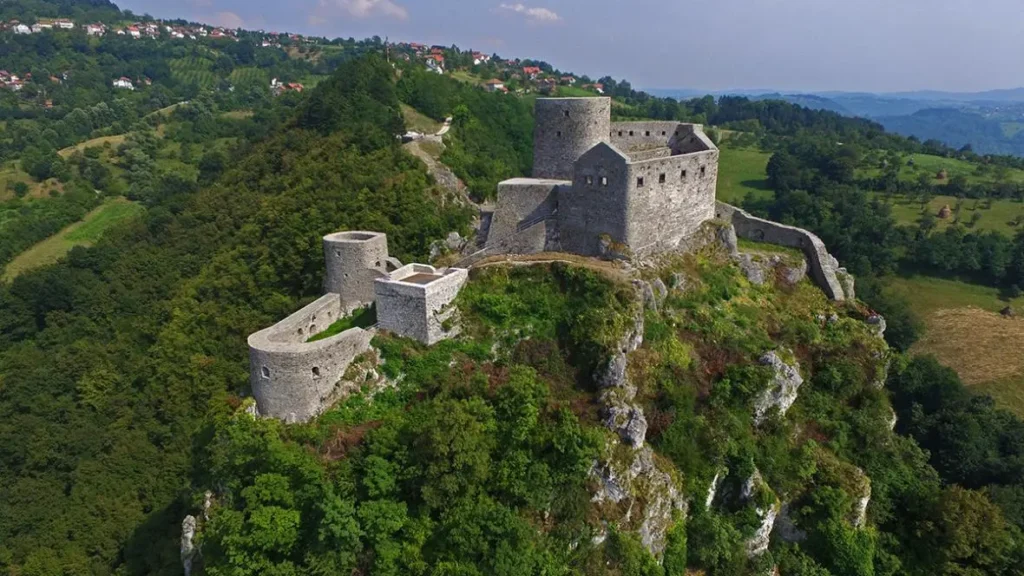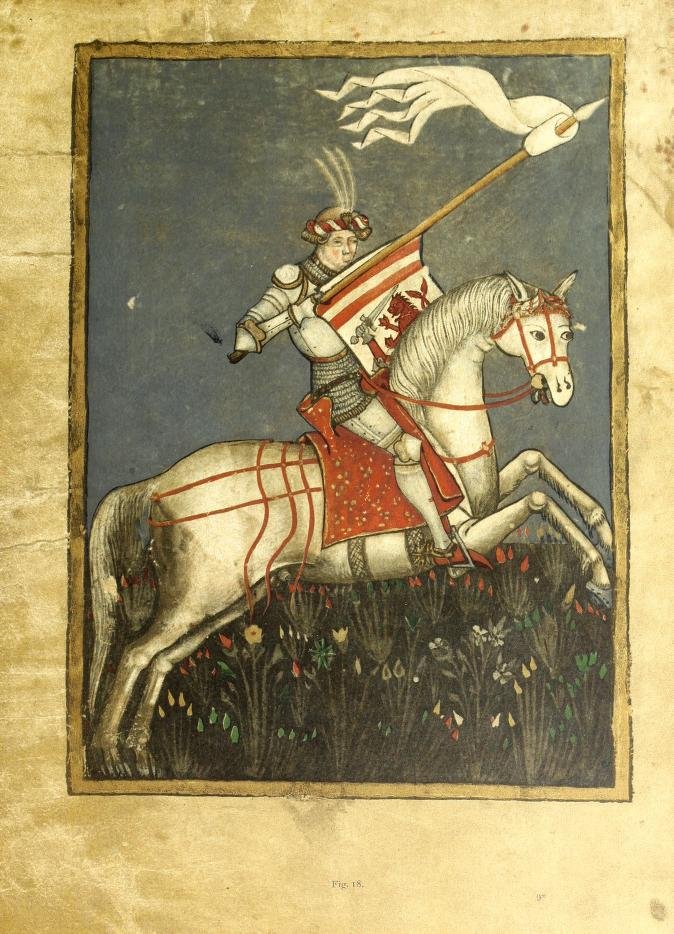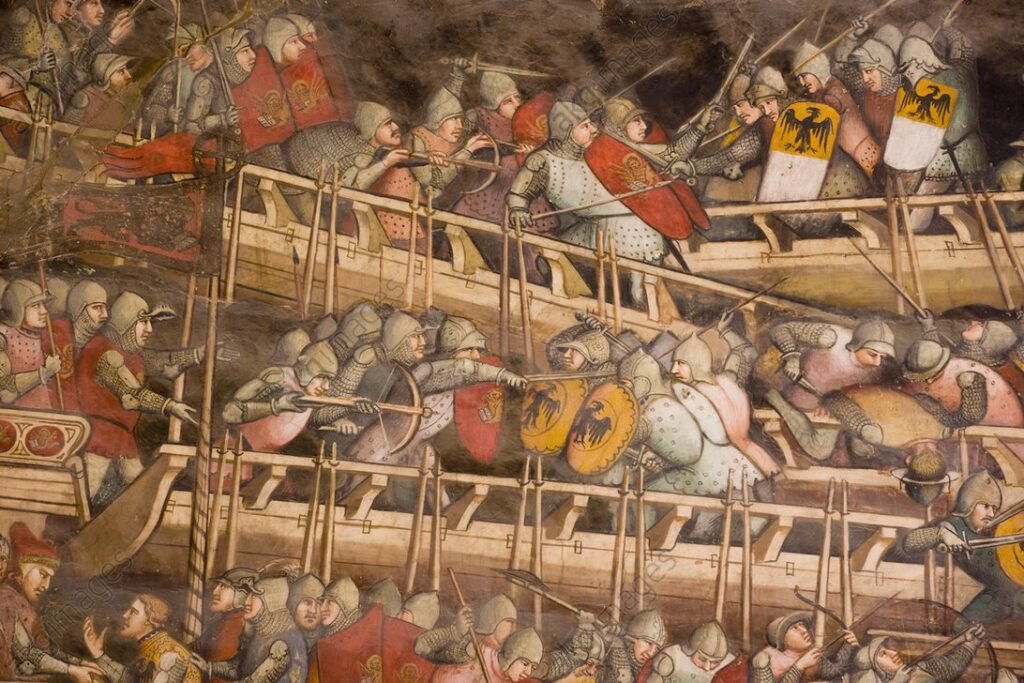Introduction to the Bosnian Medieval State
The Bosnian medieval state emerged in the late 12th century, a significant period characterized by its unique political and cultural development within the Balkans. During this time, the region of Bosnia began to establish itself as a distinct entity under the leadership of the first Bosnian Ban, Kulin Ban. His reign, which lasted from 1180 to 1204, is often credited with laying the foundations for a more cohesive governance structure and promoting economic and social stability. Kulin Ban’s efforts enabled a degree of autonomy from the influences of both the Byzantine Empire and the Kingdom of Hungary, shaping a sense of national identity among the local populace.
The formation of the Bosnian medieval state was intricately linked to the broader geopolitical context of the time. Surrounding powers, including the mighty Byzantine Empire and the Islamic Ottoman Empire, played significant roles in influencing Bosnia’s political landscape. The strategic location of Bosnia, situated at the crossroads of various trade routes, fostered economic exchanges and contributed to the emergence of a unique Bosnian culture. The state often found itself balancing the interests of these neighboring powers, navigating between alliances and conflicts.
As the medieval period progressed, the governance structure of the Bosnian state evolved, reflecting a mix of local traditions and external influences. The Bosnian nobility began to gain more power, leading to a feudal system that characterized the region’s political organization. The establishment of strong local governance under Kulin Ban and his successors facilitated the emergence of medieval Bosnian institutions and societal frameworks that would influence the region for centuries to come. This period marked not only the rise of the Bosnian state but also laid the groundwork for its distinctive cultural and religious landscape, which would later intertwine with the Bogomil movement.

The Bosnian Church: Principles and Practices
The Bosnian Church, emerging during the medieval period, represents a unique religious institution that diverged from mainstream Christian practices. Its origins can be traced back to the spread of Bogomilism, a religious movement that originated in the 10th century and emphasized dualistic beliefs, fostering a significant ideological shift in the region. The principles espoused by the Bosnian Church included an interpretation of Christian doctrine that deviated from the established norms of the Roman Catholic and Eastern Orthodox churches. This divergence allowed it to cultivate a distinctive identity that both reflected and informed Bosnian society’s evolving cultural landscape.
Central to the Bosnian Church’s beliefs was a rejection of certain traditional ecclesiastical structures and dogmas. Followers believed in a direct relationship with the divine, eschewing the need for clergy and sacraments. This emphasis on personal spirituality aligned closely with the principles of Bogomilism, which criticized the materialism of the established churches and the corruption perceived within them. The Bosnian Church, therefore, served as a bastion for these alternative ideals, allowing individuals to connect with their faith outside the conventional frameworks of authority.
The Bosnian Church’s influence extended beyond the spiritual realm; it became a significant political entity within the medieval state. Its proponents often found themselves in conflict with external powers, particularly the Roman Catholic Church and the Byzantine Empire, which sought to consolidate control over the region. This tension led to a complex relationship between the church and the Bosnian nobility, as ruling families often aligned with the church to reinforce their own authority against external pressures. Consequently, the Bosnian Church played a pivotal role in shaping both the political dynamics and cultural identity of the medieval Bosnian state, highlighting its importance as a dual entity that intertwined faith with governance.

The Bogomils: An Overview
The Bogomil movement emerged during the 10th century, rooted in a blend of dualistic beliefs that had traveled across Europe and resonated particularly within the Balkans. This sect, often associated with Gnosticism, rejected the material world as inherently evil, advocating for a spiritual existence that emphasized inner purity and enlightenment. The Bogomils viewed the dichotomy between good and evil as central to their faith, positing that an omnipotent deity created the spiritual realm, while a malevolent entity crafted the physical world.
One of the key figures within the Bogomil movement was a preacher named Peter of Bogomil, whose teachings inspired followers to abandon conventional Christian practices and embrace a more ascetic lifestyle. His movement spread rapidly through the Balkans, attracting diverse followers, including landowners and peasants disillusioned with the established Church’s wealth and hypocrisy. The Bogomils not only sought spiritual truth but challenged the societal norms of their time, emphasizing community and egalitarianism.
The beliefs of the Bogomils significantly shaped the spiritual identity of the region. Rather than adhering to the hierarchical structures that characterized mainstream Christianity, Bogomils focused on personal spirituality and direct connection with the divine. This led to the formation of various local sects, each interpreting Bogomil teachings in ways that resonated with their cultural context. As the movement spread, it established connections with other sects and movements across Europe, including the Cathars in France and the Paterines in Italy, further illustrating the interconnectedness of religious ideas during this period.
The decline of the Bogomil movement began in the late medieval period, as the Catholic Church intensified its efforts to suppress heretical beliefs. Despite this persecution, the legacy of Bogomilism persisted. Elements of their ideology and practices continued to influence Balkan spiritual life, leaving an indelible mark on the historical landscape of the region.

Historical Timeline of the Bosnian Church and Its Context
The foundation of the Bosnian Church is traced back to the 12th century, marking a significant development in the religious landscape of the region. In the early years, the church was closely associated with the spread of Bogomilism, a dualist belief system that emerged in the Balkans, influenced largely by earlier Christian heresies. By the latter part of the 12th century, the Bosnian Church began to draw distinctions from Roman Catholicism, asserting its independence.
During this period, notable figures such as the Ban Kulin emerged as influential leaders. His reign, from 1180 to 1204, stands out as a time of relative stability and cultural prosperity. Ban Kulin was particularly tolerant toward the Bogomils, fostering an environment that allowed the faith to flourish. This leniency, however, led to discontent among the Catholic bishopric of Zagreb, which saw the growth of the Bosnian Church as a threat to its authority.
The tensions escalated in 1216, when Pope Innocent III intervened, sending a letter to Ban Kulin urging him to suppress the Bogomils. The tension reached a peak during the reign of Ban Stjepan II Kotromanić in the 14th century, as conflicts intensified between the Bosnian Church and the Catholic Church. In 1377, an important event was marked when the Catholic Church declared a crusade against the Bogomils, aiming to eradicate the perceived heresy. Following this, the late 14th century saw increased persecution of the Bogomil community, leading to a decline in their numbers and influence.
As the 15th century approached, the interaction between the Bosnian Church and external powers intensified, ultimately impacting the regional dynamics further. The Ottoman conquest in the mid-15th century brought about a new phase in the religious landscape, allowing a portion of the Bosnian population to convert to Islam while the Bosnian Church continued to exist, albeit under increased strain. This timeline highlights not only the significant milestones in the history of the Bosnian Church but also its contentious relationship with mainstream Christianity, shaping the religious identity of Bosnia for generations to come.

Bosnian Umma: The Role of Society in Church Affiliation
The Bosnian Church, which became prominent during the medieval period, played a crucial role in shaping the everyday lives of its adherents. It provided a sense of identity and belonging that was deeply intertwined with the social structures of the Bosnian Umma, the community of believers in Bosnia. This social fabric was characterized by strong communal ties, where relationships among members were nurtured through shared beliefs and rituals.
Communities that adhered to the Bosnian Church often created a unique social identity, distinct from the surrounding Catholic and Orthodox populations. The Church’s teachings emphasized local customs and traditions, which helped followers forge a collective identity. This sense of belonging was not merely spiritual but also had tangible social implications, as community gatherings and celebrations reinforced interpersonal bonds and established a network of support among its members.
In resisting external religious authorities, the Bosnian Church fostered a strong sense of autonomy within its community. The followers regularly engaged in practices that not only solidified their beliefs but also manifested in opposition to the pressures from the Catholic and Orthodox Churches. By supporting localized interpretations of faith, the Bosnian Church allowed the society to maintain its unique character, reinforcing ties among its members and encouraging solidarity in the face of external challenges.
Moreover, the Church’s role extended into the socio-economic dimensions of life, as it often functioned as a social institution that provided assistance to the needy and promoted ethical conduct. This interplay between faith and daily living contributed to the cohesive identity of the Bosnian Umma. Thus, the influence of the Bosnian Church permeated various aspects of life, shaping not only individual spiritual journeys but also the collective consciousness of the community.

Impact of the Bosnian Church and Bogomilism on the Renaissance
The Bosnian Church and the Bogomil movement significantly influenced the cultural and intellectual landscape during the Renaissance. Although often overshadowed by more prevalent movements such as Humanism in Italy, the unique religious practices and philosophies of the Bosnian Church cultivated an environment that encouraged critical thinking and the exchange of ideas, which were pivotal during this transformative period in European history. The Bogomils, who were known for their dualist beliefs, emphasized a direct, personal relationship with the divine, diverging from the orthodox doctrines prevalent in their time. This perspective not only provided an alternative spirituality but also fostered a sense of inquiry and skepticism towards established authorities.
Cultural exchanges were prevalent in the region, as the Bosnian Church acted as a conduit for the transmission of knowledge. Its teachings, after merging with local customs and European philosophical ideas, created a rich tapestry of thought that resonated with various intellectual circles. Many scholars from Eastern and Western Europe traveled through Bosnia—some seeking refuge from political turmoil—engaging in dialogues that would ultimately enrich the overall intellectual atmosphere of the Renaissance. The philosophies of the Bogomils, with their focus on individual experience and morality, harmonized with Renaissance humanism, emphasizing the importance of personal enlightenment and ethical living.
Conflict with Rome and Decline of the Bosnian Church
The Bosnian Church, which was significantly influenced by Bogomil teachings, emerged as a distinct religious entity during the medieval period. Its development was marked by a notable degree of autonomy and resistance to external ecclesiastical authorities, particularly the Catholic Church, which sought to assert its dominance in the region. The tension between the Bosnian Church and the Catholic Church intensified as the latter aimed to consolidate power over its territories, viewing the Bogomil-influenced Bosnian Church as a heretical challenge to its doctrinal supremacy.
The escalation of conflict became increasingly pronounced in the late 14th and early 15th centuries. The Catholic Church, alarmed by the persistence and appeal of the Bosnian Church and its Bogomil roots, embarked on campaigns aimed at eradicating what it perceived as heresy. The Inquisition, a pivotal element of this process, was orchestrated to root out nonconformity, targeting adherents of the Bosnian Church. These efforts included public trials and persecutions, which served to intimidate and suppress deviation from Catholic orthodoxy.

Legacy of the Bosnian Medieval State and Its Church
The Bosnian medieval state, existing from the 12th to the 15th century, left an indelible mark on contemporary Bosnia and its cultural identity. Central to this legacy is the role of the Bosnian Church, frequently associated with Bogomilism, a Christian sect that emphasized a dualist outlook. This sect shaped the religious landscape of the region, impacting not only ecclesiastical matters but also the socio-political sphere during a tumultuous era of change and conquest.
The historical memory of the Bosnian Church and its connection to Bogomilism continues to influence modern Bosnian identity. As Bosnia strives to reconcile its diverse religious and ethnic backgrounds, the legacy of the Bosnian medieval state emerges as a focal point in contemporary discussions. The narratives surrounding the Bosnian Church often serve to foster a sense of unity or highlight the complexities within the nation’s past. Within the context of current socio-political dynamics, the historical significance of these events is revisited by scholars, writers, and citizens alike, contributing to ongoing debates regarding national identity.
Moreover, various interpretations of this legacy have surfaced in recent cultural discourse, with specific emphasis on the roles that religion and historical allegiances have played in shaping modern Bosnian society. For instance, the place of Bogomilism, while historically marginalized, is increasingly recognized for its contributions to the broader European context of religious thought and dissidence. This renaissance of interest underscores how historical narratives evolve over time and how they are reappropriated to foster contemporary relevance.
In understanding the complexities of Bosnian identity today, the influence of the medieval state and the Bosnian Church must be acknowledged, as they serve not only as relics of the past but also as vital components of the ongoing dialogue about who Bosnians are and what they aspire to achieve.
Conclusion: Reflections on History and Its Relevance Today
The historical significance of the Bosnian medieval state, particularly its connections to the Bogomils, provides a critical lens through which to examine not only the past but also contemporary societal dynamics in Bosnia and Herzegovina. This period of history is often overshadowed by larger narratives within European history, yet it presents essential insights into the region’s socio-religious fabric. The existence of a distinct Bosnian identity rooted in non-conformity to prevailing Catholic and Orthodox doctrines illustrates the impact of the Bogomils’ teachings and practices on medieval Bosnian society.
Understanding the Bosnian medieval state and its religious underpinnings is vital for comprehending the complexities facing Bosnia and Herzegovina today. The legacies of religious pluralism and civic autonomy fostered during this era continue to influence national identity and shape social discourse. Amid ongoing challenges related to nationalism and ethnic divisions, the historical narratives stemming from this period serve as a reminder of the potential for coexistence and mutual respect among diverse communities.
By exploring these historical narratives, scholars and citizens alike can draw parallels between past and present, fostering a greater awareness of the importance of tolerance and unity in a multi-ethnic society. As the nation grapples with its identity post-conflict, reflections on the medieval Bosnian state provide essential lessons on the significance of cultural heritage in promoting cohesion and understanding amid challenges. Thus, a deeper engagement with Bosnia’s medieval past not only enriches our understanding of European history but also holds crucial relevance in informing contemporary discussions about identity, peace, and reconciliation.




Leave a Reply